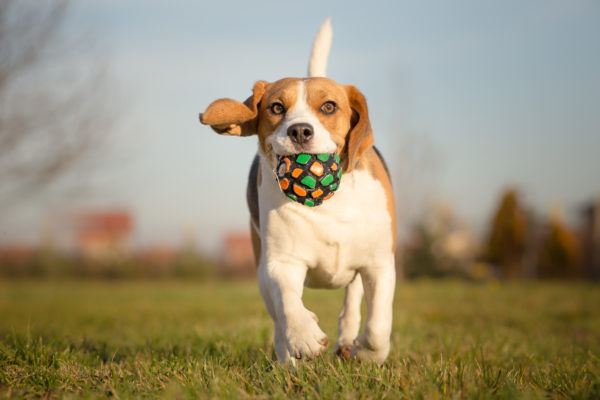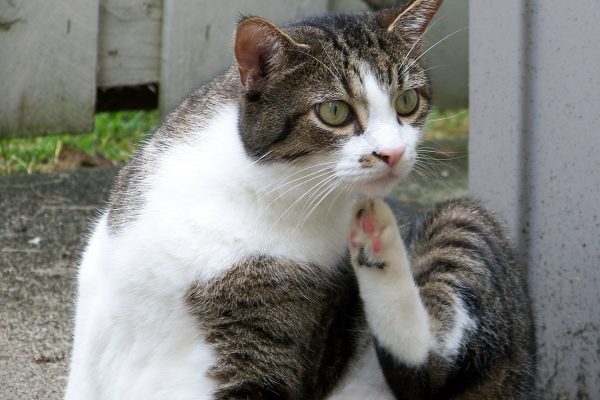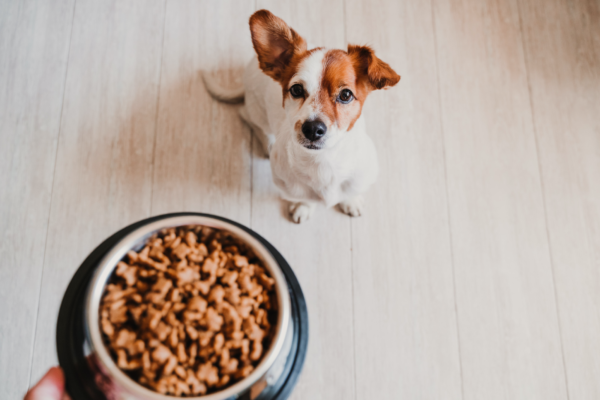Brushing your dog or cat
Taking care of your dog or cat’s coat reduces the amount of hair in your home and helps keep your pet’s coat looking beautiful and healthy. Your pet’s coat contributes directly to their natural skin defense system — a healthy coat means healthy skin, but the opposite is also true.
Before you brush your dog or cat’s coat, get them used to being touched. You also want to introduce them to the brush or comb in a positive way. If your pet is comfortable with the tool and you put them in a comfortable position, you’re much more likely to have an easy time brushing their fur. See our article to learn more about the basic guidelines for caring for your pet.
THE GROWTH CYCLE OF FUR
The growth cycle of fur has three phases: growing, resting, and shedding. It’s normal for an animal to shed its fur. The length of this cycle can vary widely depending on the breed, what they eat, and their environment. Changes to the amount of daylight can also trigger hormonal changes that cause your pet to shed more fur—the infamous seasonal shedding.
THE BENEFITS OF BRUSHING
Combing and brushing your cat or dog’s coat has three main effects: it helps regulate sebum (the skin’s natural oil), removes visible dirt, and removes dead fur. Too much dead fur can cause your pet’s coat to become matted and knotted. In addition to causing discomfort, matted fur can trap moisture and dead skin, which can lead to skin irritation and additional complications.
Brushing your kitty can also reduce the amount of fur they ingest while grooming themselves, which lowers the risk of hairballs forming in their digestive system.
Remember—giving your pet a bath is not an alternative to brushing them — quite the contrary! Daily brushing can reduce the number of baths you need to give your four-legged friend to keep their skin healthy.
WHAT YOU NEED
For both cats and dogs, the type of brush you need depends on the length and type of their fur and how sensitive their skin is. You may need to brush your pet a few times to get their coat gleaming! Here are some tools that may come in handy. You can find similar products in our Globalvet stores.
- Combs: Generally come in two sizes—large combs to detangle the biggest knots first, and finer combs to get out any smaller clumps. It can be hard to remove some knots with a comb. A wire comb can help, or a trimmer comb with rounded tips.

- Detangling brushes and wire brushes: These brushes have wire bristles with small barbs at the tips to work out even the most stubborn knots. Choose a brush with large, more spaced out bristles if your cat or dog has long hair. Avoid brushing sensitive areas like bellies or paws.

- Deshedding and dematting brushes: These brushes, some of which also come as combs (e.g., the Furminator®), are specially designed to remove dead fur and lighten your pet’s undercoat. They come in very handy during shedding season. Only use these brushes on the less sensitive parts of your pet’s body, like their back, sides, and neck.


- Smoothing brushes: These brushes are made with soft, supple bristles that remove the dead fur, dead skin, and dirt that accumulates on the surface of your pet’s coat. Since the bristles are soft, you can use these brushes on more sensitive areas like bellies and paws. Smoothing brushes are all you need for animals with short hair.

- Round-tipped scissors or razors: these can be helpful if your pet has a lot of matted fur or knots in its coat.

- Round-tipped scissors or razors: these can be helpful if your pet has a lot of matted fur or knots in its coat.
INSTRUCTIONS FOR BRUSHING YOUR DOG OR CAT
Don’t forget to do a few trial runs to get your pet used to the idea before you brush them! To start, use the back of the brush. It may seem strange, but the idea is to get your pup or kitty used to the brush. Once they’re comfortable with that, gently brush their coat for a few seconds every day.
- Always brush your pet’s fur with the grain, using the right brush for their fur type.
- Use a comb or wire brush to work out any mats. If you aren’t able to brush out the mat, use round-tipped scissors to cut it out. To do this, slide your comb under the mat (between the knotted fur and the skin) to isolate it, then carefully snip it off. Don’t use regular scissors—they could hurt your furry friend. Your other option is to use an electric razor on dry fur to shave off the matted fur. If the mat is really close to your pet’s skin, cut or shave it in half and you should be able to untangle it.
- If your pet has medium or long hair, brush their coat to remove any dead fur.
- Finish by smoothing out your pet’s fur with a soft bristle brush.
- Give your pet lots of treats and take breaks if you need to.
You can brush your pet every day. In addition to the benefits mentioned above, it can be a nice and relaxing way to spend some time with your furball if you do it gently and create a positive experience for them! Brushing your cat or dog will strengthen the bond of trust you share. What’s more, the more you brush them, the less likely they are to get matted fur.
Sources:



